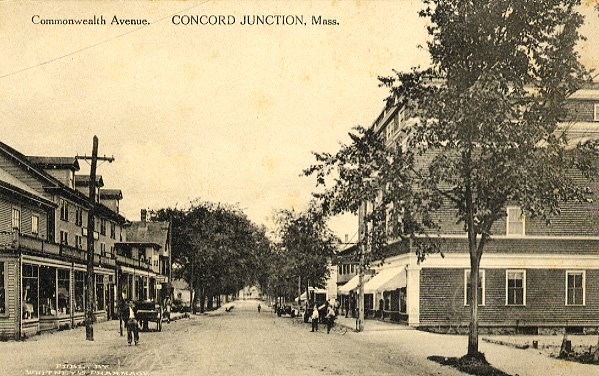

20. Westvale Becomes Concord Junction
The end of the Damon Mill era came incrementally, changing the character of the neighborhood in its dissolution just as it had in its creation and growth. In 1899 the bank removed the mill machinery when the main buildings were sold to the Concord Rubber Company. This company employed just fifty people, mostly girls, and remained in business for about five years. At the same time, the Concord Junction Investment Company purchased the tenements that had been used as mill worker’s housing and converted them into apartments, while the Roger Brown House, known locally as “1775 House,” became a boarding house. In 1903 the Westvale post office, which had been established in 1870, was discontinued, and residents instead transacted business at the Concord Junction post office.
At the turn of the century the Concord, Maynard and Hudson Street Railway began operation, a trolley line that along with trains, merchants, and manufacturers contributed to the already bustling character of Concord Junction. Boston Harness had set up operations in 1890, the Bluine Factory in 1895, and the Allen Chair Factory in 1905. By the time this postcard was published, Concord Junction possessed its own thriving retail district on Commonwealth Avenue.
The Strathmore Worsted Mills began operating in the Damon Mill complex about 1908, the last mill business to use the site. A boom in the textile industry as a result of World War I was followed by a decline, and Strathmore shut down operations in 1922.